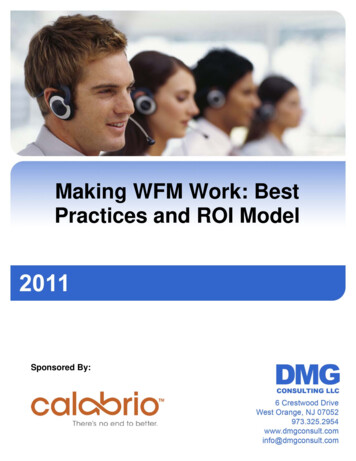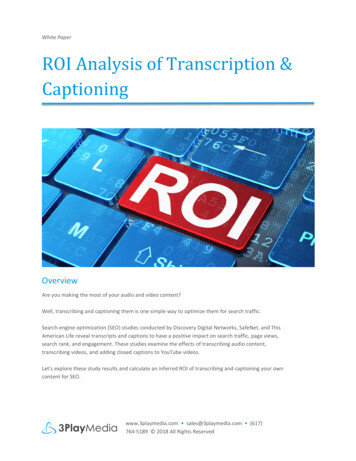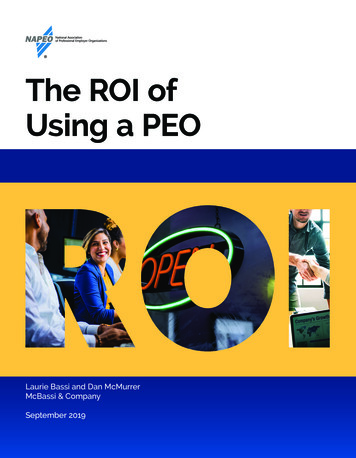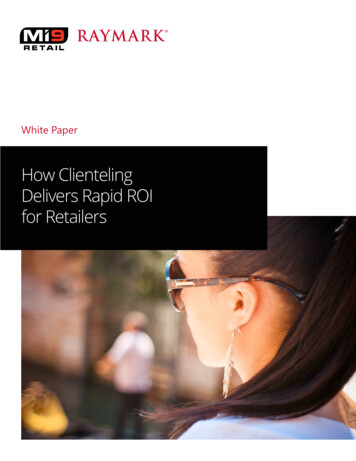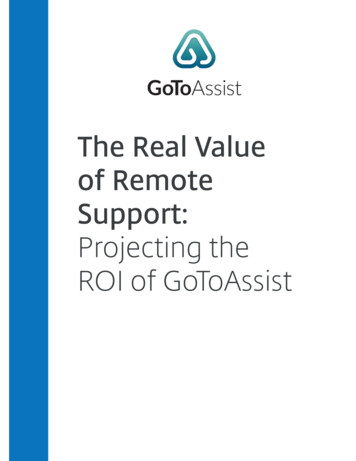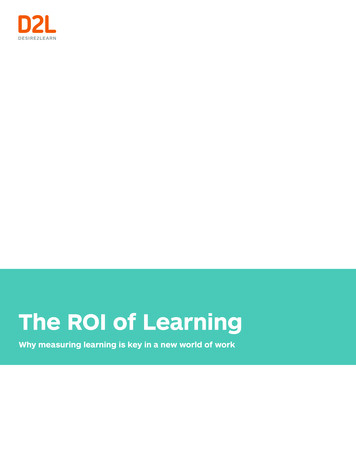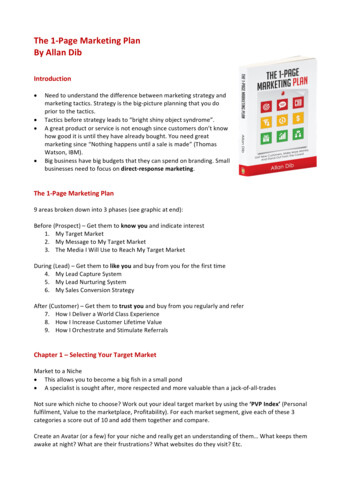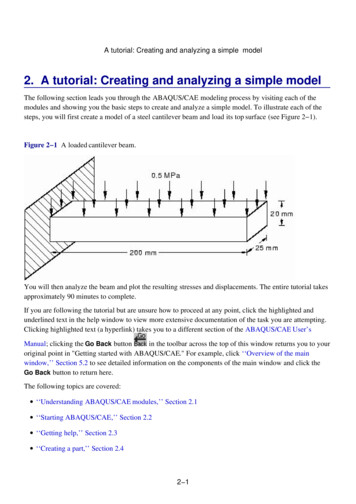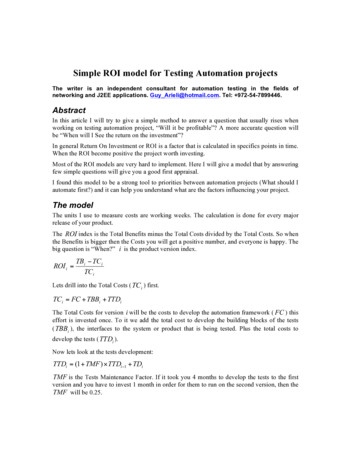
Transcription
Simple ROI model for Testing Automation projectsThe writer is an independent consultant for automation testing in the fields ofnetworking and J2EE applications. Guy Arieli@hotmail.com. Tel: 972-54-7899446.AbstractIn this article I will try to give a simple method to answer a question that usually rises whenworking on testing automation project, “Will it be profitable”? A more accurate question willbe “When will I See the return on the investment”?In general Return On Investment or ROI is a factor that is calculated in specifics points in time.When the ROI become positive the project worth investing.Most of the ROI models are very hard to implement. Here I will give a model that by answeringfew simple questions will give you a good first appraisal.I found this model to be a strong tool to priorities between automation projects (What should Iautomate first?) and it can help you understand what are the factors influencing your project.The modelThe units I use to measure costs are working weeks. The calculation is done for every majorrelease of your product.The ROI index is the Total Benefits minus the Total Costs divided by the Total Costs. So whenthe Benefits is bigger then the Costs you will get a positive number, and everyone is happy. Thebig question is “When?” i is the product version index.ROI i TBi TC iTC iLets drill into the Total Costs ( TC i ) first.TCi FC TBBi TTDiThe Total Costs for version i will be the costs to develop the automation framework ( FC ) thiseffort is invested once. To it we add the total cost to develop the building blocks of the tests( TBBi ), the interfaces to the system or product that is being tested. Plus the total costs todevelop the tests ( TTDi ).Now lets look at the tests development:TTDi (1 TMF ) TTDi 1 TDiTMF is the Tests Maintenance Factor. If it took you 4 months to develop the tests to the firstversion and you have to invest 1 month in order for them to run on the second version, then theTMF will be 0.25.
So to calculate the total tests costs in version i , we take the total costs for the previous version( i 1 ) multiply it by 1 plus TMF and add to it the efforts to develop new tests for the newversion ( TDi )We will do the same for tests building blocks:TBBi (1 BMF ) TBBi 1 BBiTBBi is the Tests Building Blocks Maintenance Factor.BBi is the Building Blocks development efforts for version i . If for example they just addsome kind of Database feature in the product and you have to write an easy to use API or adriver to enable access to the database, in order to test it. The development efforts will be addedto the Building Blocks development ( BBi ).Now if we look at the 2 formulas (for TTDi and TBBi ) the only parts that are difficult tocalculate are TDi and BBi . TBBi 1 and TBBi 1 are 0 for the first version and are known for allthe other versions.So in order to make it easer to calculate TDi and BBi I use the following formulas:BBi NFi M i BBMTDi NFi M i TDMWere:NFi is the New Feature factor, the ratio between the efforts to test new feature and the totalefforts (include regressions), of the manual testing. If half of the testing efforts are beinginvested in new features then NFi will 0.5.M i is the manual efforts for version i.TDM is the ratio between tests development efforts to manual efforts. If I have a tests planthat take 1 week to execute and (assuming I have the tests building blocks) it will take me 2weeks to write (and debug) the automatic tests the TDM is 2.BBM is the ratio between building blocks effort ( BBi ) to manual efforts.We finished with the costs let’s look at the benefits:TBi TBi 1 RFi M iRFi is the Relevancy Factor, the ratio between the relevant efforts to the total efforts. If 10% ofthe tests I wrote to version 1 are irrelevant to version 2 then RFi will be 0.9.So the total benefits for version i equals to the benefits of version i 1 multiply the relevancyfactor plus the manual efforts for version i .I hope you didn’t get lost in all the formulas. But in order to use this module on a project allyou have to enter are the following parameters:
ParameterDescriptionFCFramework costBMFBuilding blocks maintenance factor.NFNew factor, the ratio between the new featureefforts and the total efforts (includeregressions), of the manual testing.RFiRelevancy Factor, the ratio between therelevant efforts to the total efforts.BBMThe ratio between building blocks effort ( BBi )to manual effortsTMFTests maintenance factor.TDMThe ratio between test development efforts tomanual efforts.MiManual efforts for version i. Includes all theregressions and repetitions of tests.Only 8 parameters and you have it all.
ExampleLet’s see how it looks in excel sheet:BMFTMFNFBBMTDMMiTCRF000.30.5150 weeks16 5
Typical ProjectsFollowing are list of project types with typical parameters values (for medium size oject16000.30.30.50.9540ComplexDynamicHTML GUI160.30.20.30.70.70.940Functionaltesting for J2EEproject usingbusiness logiclayer (not GUI)160.10.10.30.20.50.9540Limitations This model works best if you already have data of previous projects. It will enable you tocalibrate the parameters values. The benefits include only direct benefits, the time that was saved in the manual testing.Huge profits in automation projects lies in the fact that the problem can be found inproximity to the time the problem was created. It affects the cost of fixing the problem.Methods, like extreme programming use this exact fact.
Simple ROI model for Testing Automation projects The writer is an independent consultant for automation testing in the fields of networking and J2EE applications. Guy_Arieli@hotmail.com. Tel: 972-54-7899446. Abstract In this article I will try to give a simple method to answer a
